第91章 LETTER XVII(4)
The roads are excellent. After one has got inside of the broad belt of cocoa and areca palms which runs along the coast, one comes upon beautiful and fertile country, partly level, and partly rolling, with rocks of granite and mica-schist, and soil of a shallow but rich vegetable mould, with abundance of streams and little cascades, dotted all over with villas (very many of them Chinese) and gardens, and planted with rice, pepper and fruits, while cloves and nutmegs, which last have been long a failure, grow on the higher lands. The centre of Pinang is wooded and not much cultivated, but on the south and south-west coasts there are fine sugar, coffee and pepper plantations.
The coffee looks very healthy. From the ridges in the centre of the island the ground rises toward the north, till, at the Peak, it reaches the height of two thousand nine hundred and twenty-two feet. There is a sanitarium there with a glorious view, and a delicious temperature ranging from 60 degrees to 75 degrees, while in the town and on the low lands it ranges from 80 degrees to 90 degrees. A sea breeze blows every day, and rain falls throughout the year, except in January and February. The vegetation is profuse, but less beautiful and tropical than on the mainland, and I have seen very few flowers except in gardens.
The products are manifold--guavas, mangoes, lemons, oranges, bananas, plantains, shaddocks, bread-fruit, etc.; and sugar, rice, sweet potatoes, ginger, areca, and cocoa-nuts, coffee, cloves, some nutmegs, and black and white pepper. My gharrie driver took me to see a Chinese pepper plantation--to me the most interesting thing that I saw on a very long and hot drive. Pepper is a very profitable crop. The vine begins to bear in three or four years after the cuttings have been planted, and yields two crops annually for about thirteen years. It is an East Indian plant, rather pretty, but of rambling and untidy growth, a climber, with smooth, soft stems, ten or twelve feet long, and tough, broadly ovate leaves. It is supported much as hops are. When the berries on a spike begin to turn red they are gathered, as they lose pungency if they are allowed to ripen. They are placed on mats, and are either trodden with the feet or rubbed by the hands to separate them from the spike, after which they are cleaned by winnowing. Black pepper consists of such berries wrinkled and blackened in the process of drying, and white pepper of similar berries freed from the skin and the fleshy part of the fruit by being soaked in water and then rubbed. Some planters bleach with chlorine to improve the appearance; but this process, as may be supposed, does not improve the flavor.
In these climates the natives use enormous quantities of pepper, as they do of all hot condiments, and the Europeans imitate them.
Although there are so many plantations, a great part of Pinang is uncleared, and from the peak most of it looks like a forest. It contains ninety thousand inhabitants, the Chinese more than equaling all the other nationalities put together. Its trade, which in 1860 was valued at 3,500,000 pounds, is now (1880) close upon 8,000,000 pounds, Pinang being, like Singapore, a great entrepot and "distributing point."
Now for the wilds once more!
I. L. B.
A CHAPTER ON PERAK
The Boundaries and Rivers of Perak--Tin Mining--Fruits and Vegetables--The Gomuti Palm--The Trade of Perak--A Future of Coffee--A
Hopeful Lookout--Chinese Difficulties--Chinese Disturbances in Larut--The "Pangkor Treaty"--A "Little War"--The Settlement of Perak--The Resident and Assistant-Resident The "protected" State of Perak (pronounced Payrah) is the richest and most important of the States of the Peninsula, as well as one of the largest. Its coast-line, broken into, however, by a bit of British territory, is about one hundred and twenty-five miles in length. Its sole southern boundary is the State of Selangor. On the north it has the British colony of Province Wellesley, and the native States of Kedah and Patani, tributary to Siam. Its eastern boundary is only an approximate one, Kelantan joining it in the midst of a vast tract of unexplored country inhabited solely by the Sakei and Semang aborigines.
The State is about eighty miles wide at its widest part, and thirty at its narrowest, and is estimated to contain between four and five thousand square miles. The great artery of the country is the Perak river, a most serpentine stream. Ships drawing thirteen feet of water can ascend it as far as Durian Sabatang, fifty miles from its mouth, and boats can navigate it for one hundred and thirty miles farther.
This river, even one hundred and fifty miles from its mouth at Kwala Kangsa, is two hundred yards wide, and might easily be ascended by "stern-wheel" boats drawing a foot of water, such as those which ply on the upper Mississippi. Next in size to the Perak is the Kinta, which falls into the Perak, besides which there are the Bernam and Batang Padang rivers, both navigable for vessels of light draught. Along the shores of these streams most of the Malay kampongs are built.
The interior of Perak is almost altogether covered with magnificent forests, out of which rise isolated limestone hills, and mountain ranges from five thousand to eight thousand feet in height. The scenery is beautiful. The neighborhood of the mangrove swamps of the coast is low and swampy, but as the ground rises, the earth which has been washed down from the hills becomes fertile, and farther inland the plains are so broken up by natural sand ridges which lighten the soil, that it is very suitable for rice culture.